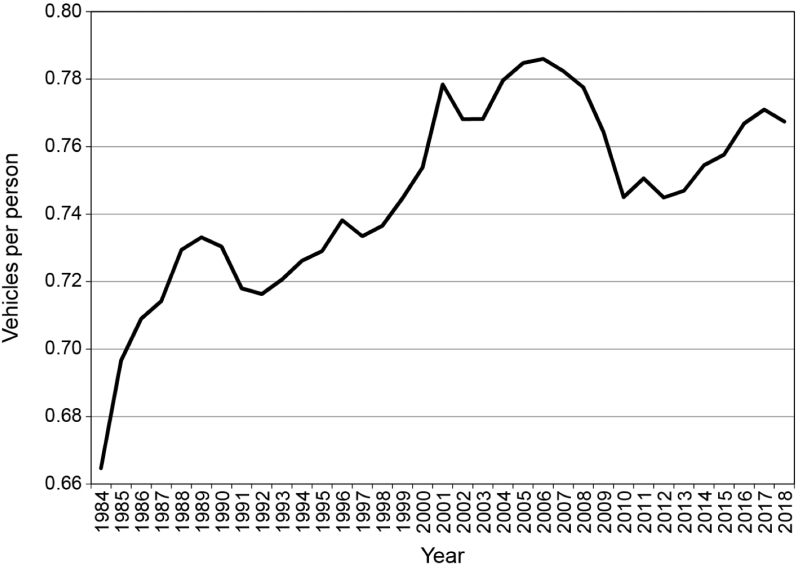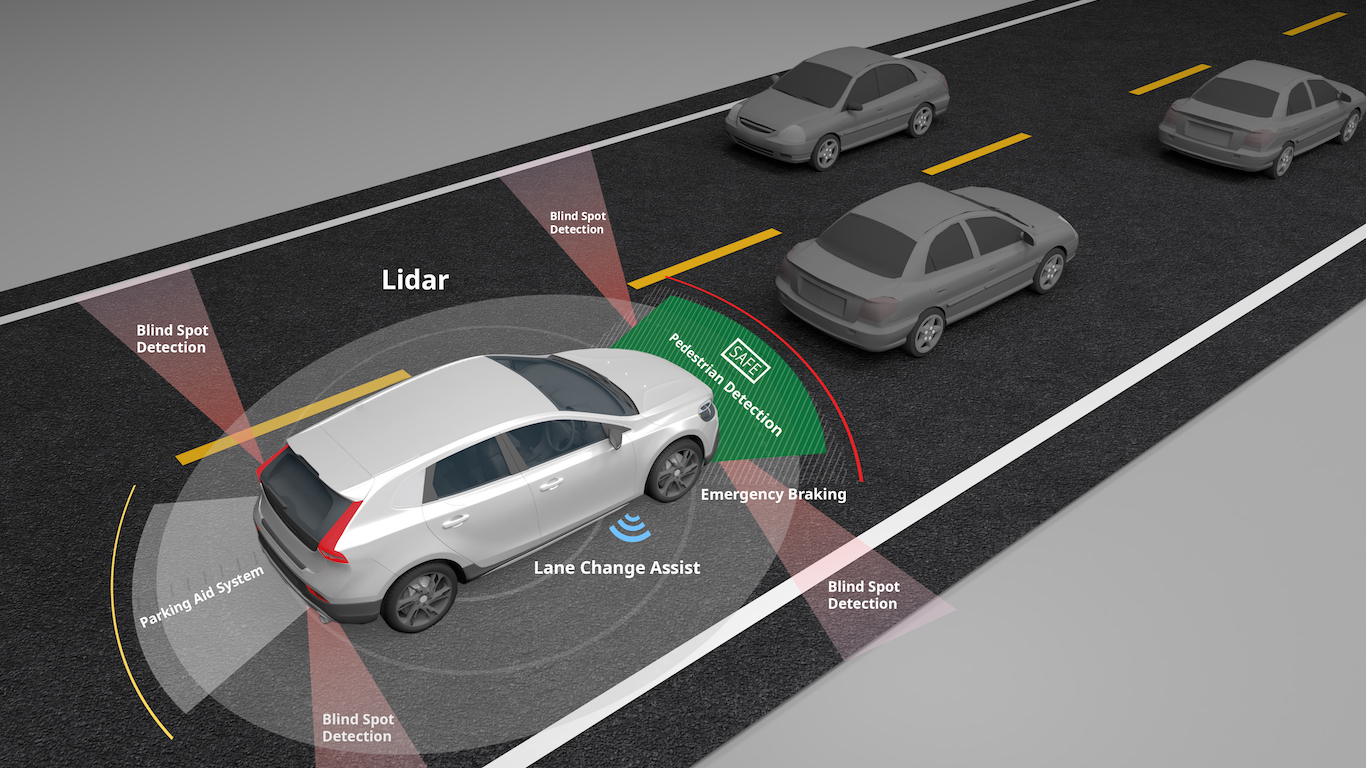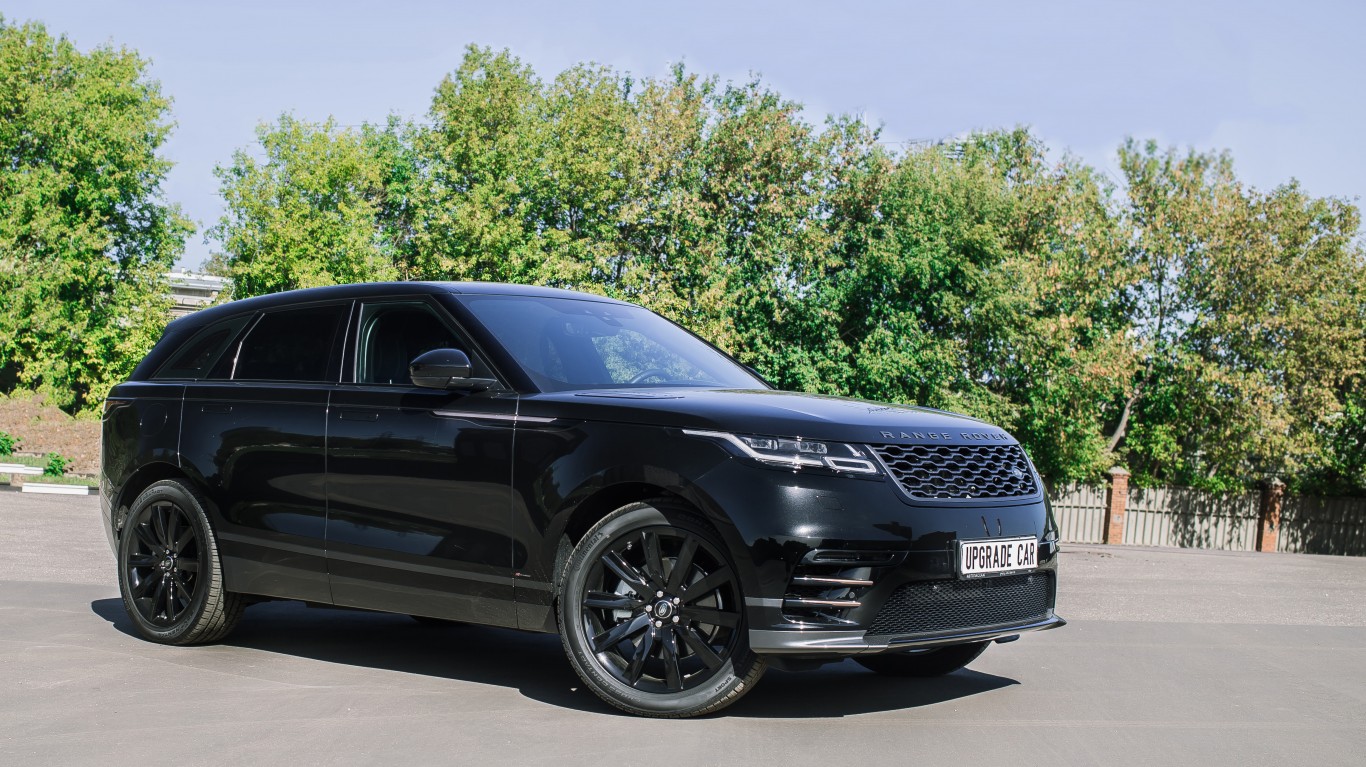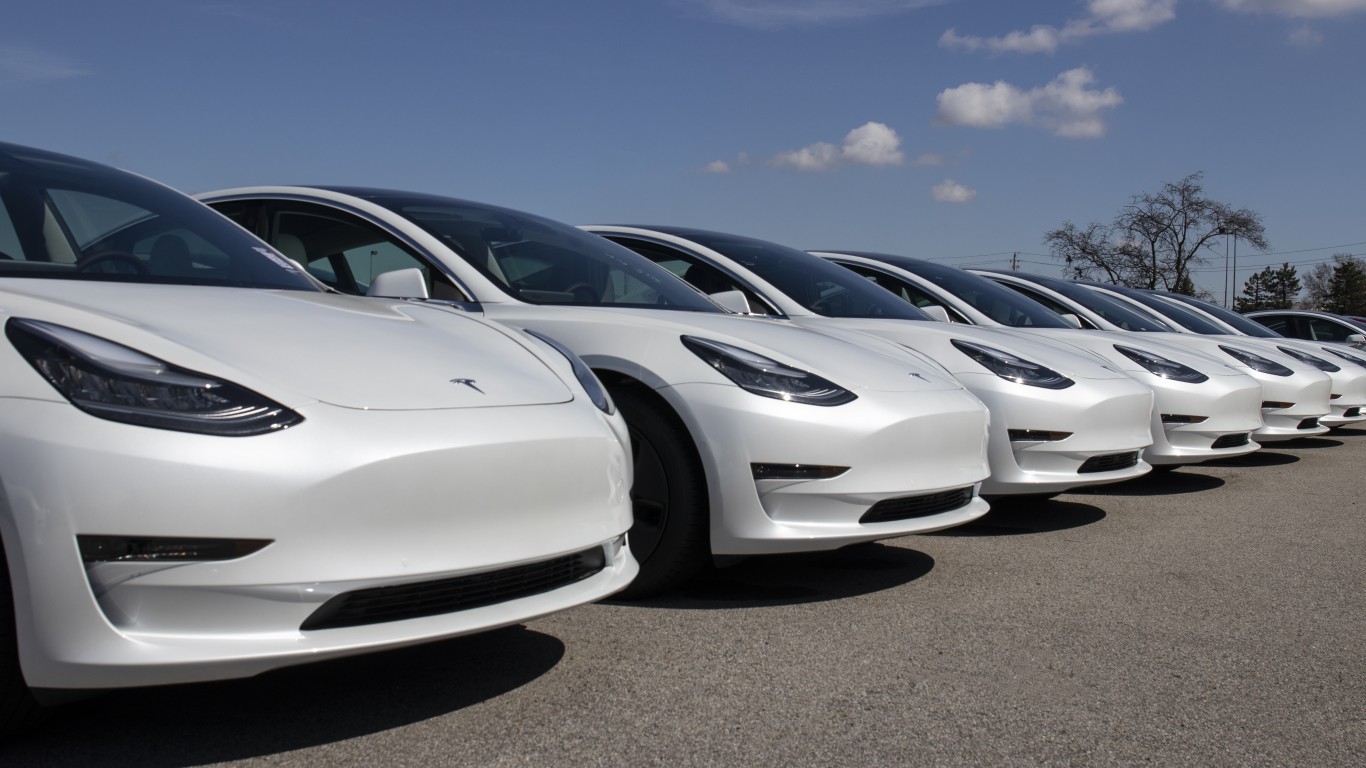
One of the truisms about Americans is that we love our cars, and pickup trucks and vans and sport utility vehicles. Like most truisms, that’s only partly true.
The whole truth is that we love our personal vehicles to the same degree we did 20 years ago and considerably less than we did before the financial crisis.
In a new report from Green Car Congress, researcher Michael Sivak analyzes the data on the number of cars per person in the United States for the period between 1984 and 2018, the last year for which data is available.
Between 1984 and 2006, vehicles per person in the United States increased by 18.2% from 0.665 to 0.786. Between 2006 and 2012, the number of vehicles per person declined by 5.2% to 0.745. Since 2012, the number has increased by 3.0% to 0.767, but that is still 2.4% below the peak reached in 2006.
Here’s a chart for the period of Sivak’s research.
In December, Sivak reported a similar decrease in the number of miles driven per person in the United States. Since reaching a peak of 9,314 miles per person in 2004, the number fell by 4.9% to 8,855 miles per person in 2018, even though it is higher than the recent trough in 2013.
It’s tempting to overgeneralize from the data and declare that vehicle ownership in the United States is in permanent decline. And if there’s something impossible to resist, it’s temptation.
New car sales topped 17 million for the first time in 2015 and barely hit that mark last year. In the world’s largest car market, Chinese new car sales peaked at more than 24 million in 2017 before dropping to 21.4 million last year. Even before the coronavirus outbreak began, neither country was expected to reach 2019’s sales totals again this year.
Will fewer cars and light trucks be sold every year from now on? Probably not, but the downward trend in both vehicles per person and miles driven per person is also unlikely to reverse itself sharply in the long term.
Thank you for reading! Have some feedback for us?
Contact the 24/7 Wall St. editorial team.

 24/7 Wall St.
24/7 Wall St.


